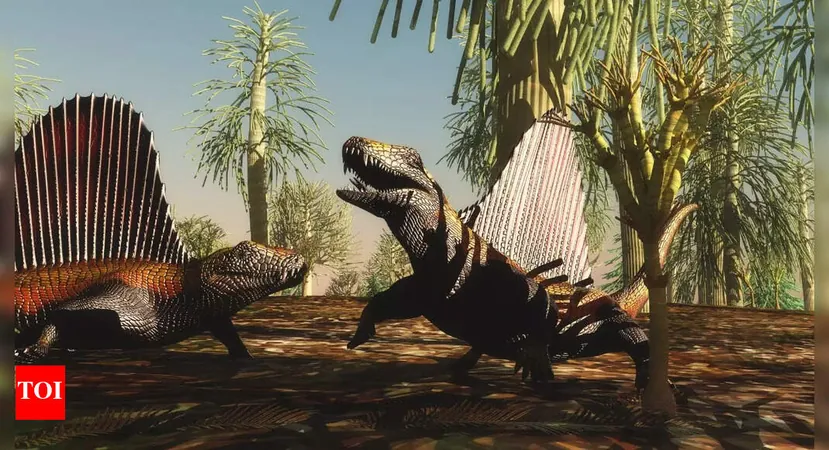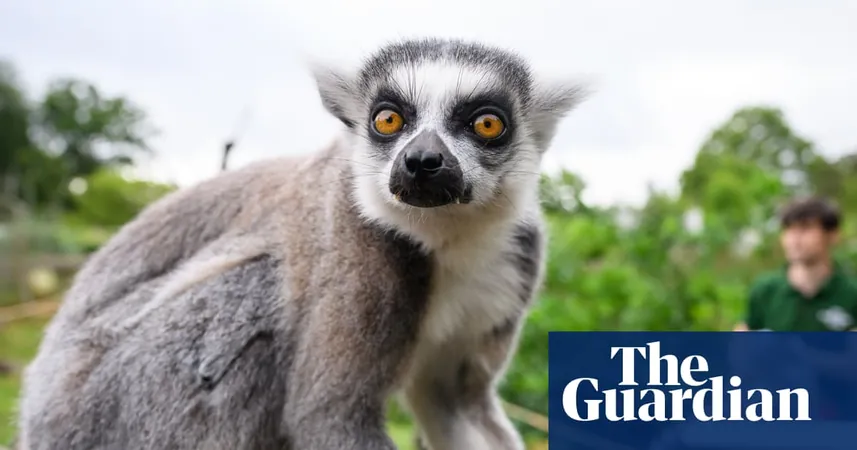
Unlocking the Secrets of Earth’s Past: 250 Million-Year-Old Fossils Discovered Before the Great Dying!
2025-08-26
Author: Benjamin
A Groundbreaking Discovery from Ancient Lands
Exciting new research has surfaced from Tanzania and Zambia, shaking up our understanding of the ancient Permian ecosystem that existed before the planet’s most notorious mass extinction, known as the 'Great Dying.' This remarkable find includes saber-toothed gorgonopsians and burrowing dicynodonts, revealing fascinating insights into the biodiversity of our planet during this ancient era.
The Permian Period: A Flourishing World
Spanning from around 299 to 252 million years ago, the Permian period was a golden age of life on Earth. This era was characterized by lush forests and diverse reptile-like and amphibian species thriving across the continents. Unfortunately, this vibrant epoch was abruptly cut short by the Great Dying, a mass extinction event that obliterated nearly 70% of terrestrial species and an even higher percentage of marine life.
Expanding Horizons in Paleontology
While the Karoo Basin in South Africa has long been the focal point of studies related to the Permian, a dedicated team from the University of Washington and the Field Museum has been digging deeper in southern Africa for over 17 years. Their excavations in the Ruhuhu Basin, Tanzania, and the Luangwa and Mid-Zambezi basins, Zambia, have unearthed a wealth of ancient fossils, leading to a more nuanced understanding of this catastrophic period in Earth’s history. Christian Sidor, a key researcher, emphasizes the significance of these findings, stating, 'This mass extinction changed the course of evolution, yet we are only beginning to grasp which species thrived and which didn’t.'
A Treasure Trove of Fossils
The research culminated in a collection of 14 peer-reviewed studies published in the Journal of Vertebrate Paleontology, showcasing incredible fossils from southern basins. These newly discovered specimens offer unmatched detail about the late Permian ecosystem and enable scientists to draw species-level comparisons with fossil finds in the Karoo Basin. The excavation team navigated challenging terrains and collaborated with local authorities to achieve this monumental success.
Comparing the Giants of Pangea
Sidor explains that this wealth of data not only illuminates diverse Permian life but also facilitates exciting comparisons between various regions of the ancient supercontinent Pangea. 'We can now truly start asking questions about survival during this tumultuous time,' he notes. This research highlights how tetrapod communities fragmented after the Great Dying, transitioning from a homogeneous ecosystem in the late Permian to distinct, localized habitats in the Triassic, paving the way for new life forms to emerge.
A New Era of Discovery Awaits
These groundbreaking fossil discoveries in Zambia and Tanzania not only enrich our understanding of Earth’s distant past but also offer a globally representative view of one of the most consequential evolutionary moments in history. As scientists dive deeper into these findings, they are ready to unveil more secrets of a world that existed long before humanity.









 Brasil (PT)
Brasil (PT)
 Canada (EN)
Canada (EN)
 Chile (ES)
Chile (ES)
 Česko (CS)
Česko (CS)
 대한민국 (KO)
대한민국 (KO)
 España (ES)
España (ES)
 France (FR)
France (FR)
 Hong Kong (EN)
Hong Kong (EN)
 Italia (IT)
Italia (IT)
 日本 (JA)
日本 (JA)
 Magyarország (HU)
Magyarország (HU)
 Norge (NO)
Norge (NO)
 Polska (PL)
Polska (PL)
 Schweiz (DE)
Schweiz (DE)
 Singapore (EN)
Singapore (EN)
 Sverige (SV)
Sverige (SV)
 Suomi (FI)
Suomi (FI)
 Türkiye (TR)
Türkiye (TR)
 الإمارات العربية المتحدة (AR)
الإمارات العربية المتحدة (AR)